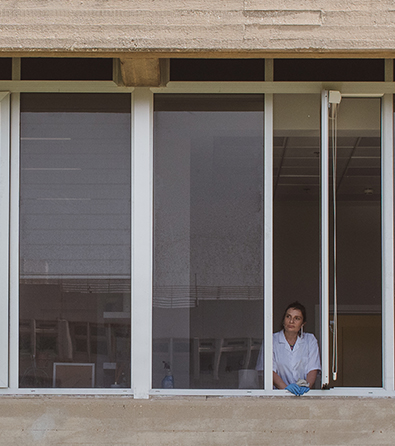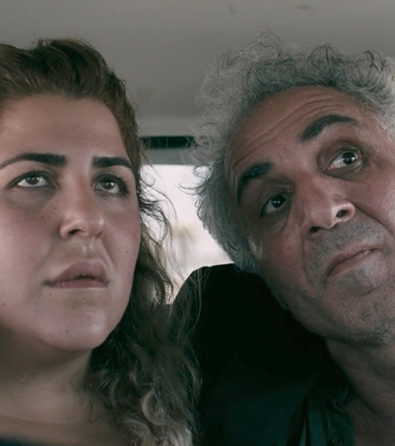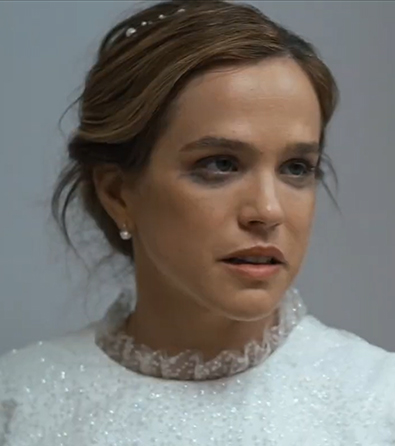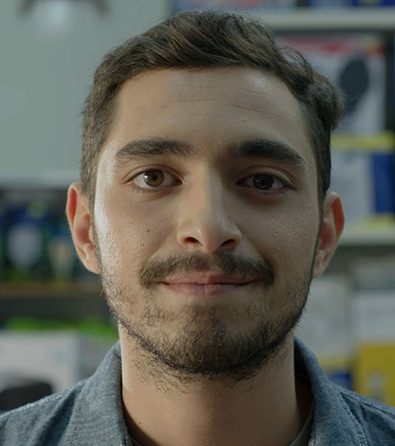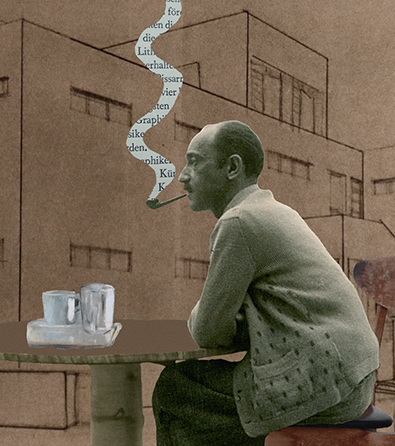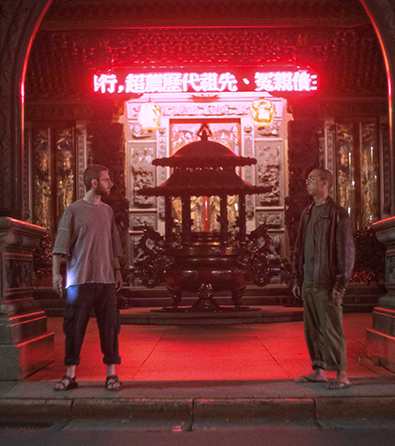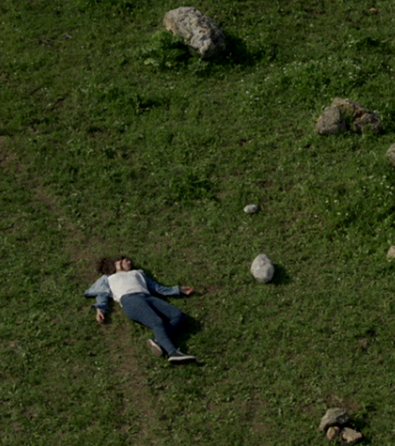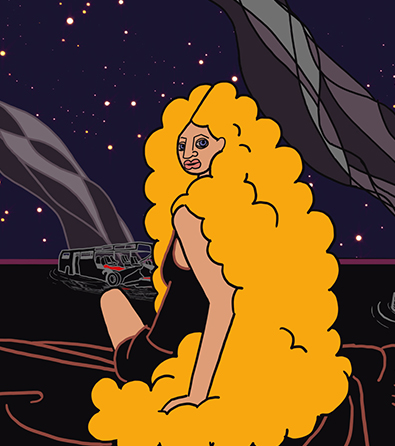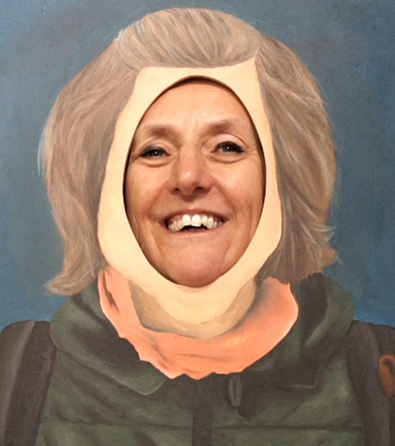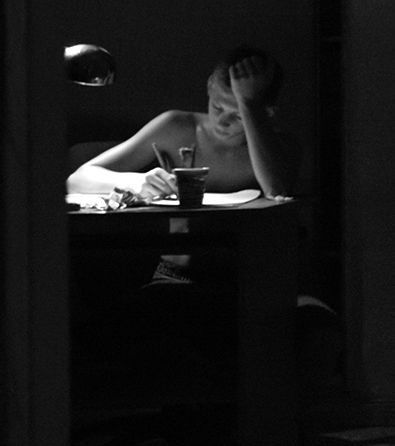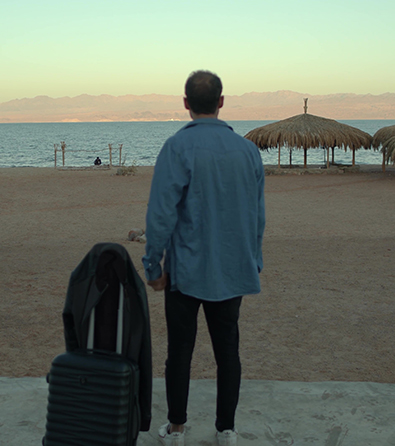The Short Film Arava (28 minutes) is available at the top of the page.
* To watch this film, please approve YouTube/Vimeo cookies via the blue cookie icon at the bottom left of the screen.
Arava is a short film directed by Sarah Meital Benjamin. It follows two teenage girls, Arava and Tzipi, on their journey from Jerusalem to Safed. This coming-of-age story unfolds in the space between faith and doubt, between individual identity and community, and between love and control. The film presents an intimate portrait of youth on the margins in Jerusalem, capturing the vitality of the city’s street punk scene in the early 2000s. This world comes to life through the turbulent friendship of two girls rebelling against their Orthodox upbringing, and through their shared pilgrimage to the tombs of revered kabbalistic sages in Safed, the northern Israeli city long considered a center of Jewish mysticism.
Arava emerged from the development process for Benjamin’s upcoming feature film and was co-written by lead actress Batèl Zaharaa Mann and producer Michael Uchenik. The film is inspired by the youth hangouts of Jerusalem, where Benjamin herself came of age. “The film portrays the lives of Jerusalem teenagers who dropped out of the school system and were drawn to both Breslov spirituality and punk culture,” she explains. For Benjamin, the intersection of street life, the nuanced and non-binary process of becoming secular, and the deep conviction among these kids that they are still children of God form inseparable parts of the identity struggles they face. Her personal memories shape the depth of the characters and spaces, granting the film its rare authenticity.
Benjamin’s own background sheds light on the layered perspective from which the film emerged. “My mother was a bohemian artist who, at a certain point, became religious and sent me to an Orthodox school,” she recalls. “It was very difficult for me to fit in because of the background I came from. Much of my work, including Arava, seeks to reveal the seam between these two very different ways of life to a wider audience.” The film maps transitions from Jerusalem’s bohemian circles to the Chabad Orthodox community, from public squares to the punk scene and youth hangouts, shaping a hybrid cultural landscape where these identities intersect. This autobiographical foundation provides a framework for exploring questions of belonging, faith, and individuality from an empathetic perspective. Benjamin notes that this Jerusalem scene has shifted over the years: “Unfortunately, today tribalism dominates even there, but when I was a teenager, it was different.”
At the center of the film is Arava, a girl from a broken family who struggles with addiction to alcohol and drugs and lives in a rehabilitation boarding school. When she returns home for the weekend, she immediately seeks out her close friend Tzipi. “Tzipi defines herself as a child of God,” Benjamin explains, “yet at the same time she will steal a wallet from someone who gives her a ride. Arava, by contrast, suffers from what I call caretaker syndrome.” Their friendship is marked by imbalance, with Arava’s romantic longing colliding with Tzipi’s need for control. It is this fragile and volatile bond that drives their journey forward.
Early in the film, as the girls sit in a youth hangout, a rabbi addressing the group urges them to pray at the tombs of sages in Safed. “We are in the month of miracles, and the Creator opens the gates of heaven to prayer more than in any other time. It’s like having fast internet, you know? When you stand at a sage’s grave and pray, you connect to his spiritual light, and he connects to you, and the two of you become one. Your prayer rises all the way to the heavenly throne. It’s a VIP ticket, and that’s the miracle.” His sermon fuses sacred language with the teens’ everyday slang, making the religious experience immediate and relatable. He manages to relate to them.
Tzipi believes that prayer at the tombs in Safed will help her escape legal trouble stemming from a crime she committed. She convinces Arava to join her, setting their shared adventure in motion. The film repeatedly returns to the line: “No one asks why you came to Safed,” a tacit pact that allows newcomers to step into spirituality without explanation. Benjamin places Safed’s rituals at the center of this youth culture: “I think Rabbi Nachman of Breslov is like a Bob Marley figure for these kids. For me, traveling to Safed was an act of teenage rebellion. Hitchhiking in a crop top with black nail polish to seclude myself with God felt very punk, like spraying graffiti on a wall.” Within Safed’s aura, a moment of betrayal pushes Arava toward inner transformation. Though wavering in her faith, she ultimately finds herself praying alone at a sage’s grave, where she finds consolation.
Benjamin’s teenage experiences, leaving school at the age of twelve and spending her adolescence with other teens aged twelve to twenty on the streets of Jerusalem, serve as a central inspiration for the film. “At that time,” she recalls, “there were youth hangouts run by the municipality and social workers, and others led by rabbis. The common denominator was clear: food was always served, and the door was open to everyone. There were guitars, and kids came to sit together, talk, and play. In the summer, they gathered in squares and on the streets; in winter, they moved into warm indoor spaces that stayed open until one in the morning, where they could listen to a rabbi or another speaker, talk, and share a meal.”
By drawing on her own story, Benjamin introduces audiences to the struggles of youth living on society’s margins and wrestling with conflicting parts of their identity. These are often young people we notice only from a distance, seemingly lost teens with dyed hair, heavy makeup, and piercings drifting through the streets. The film pulls us behind the curtain of their lives, beyond stereotypes and superficial impressions. It immerses us in the hidden world of marginalized youth in Jerusalem and offers a rare glimpse into their search for meaning and a sense of home outside the religious framework they grew up in. For Sarah Meital Benjamin, the universe woven around these hybrid characters is not merely a backdrop but a character in its own right, a small cosmos where these stories unfold at the edges of the reality we all share.
